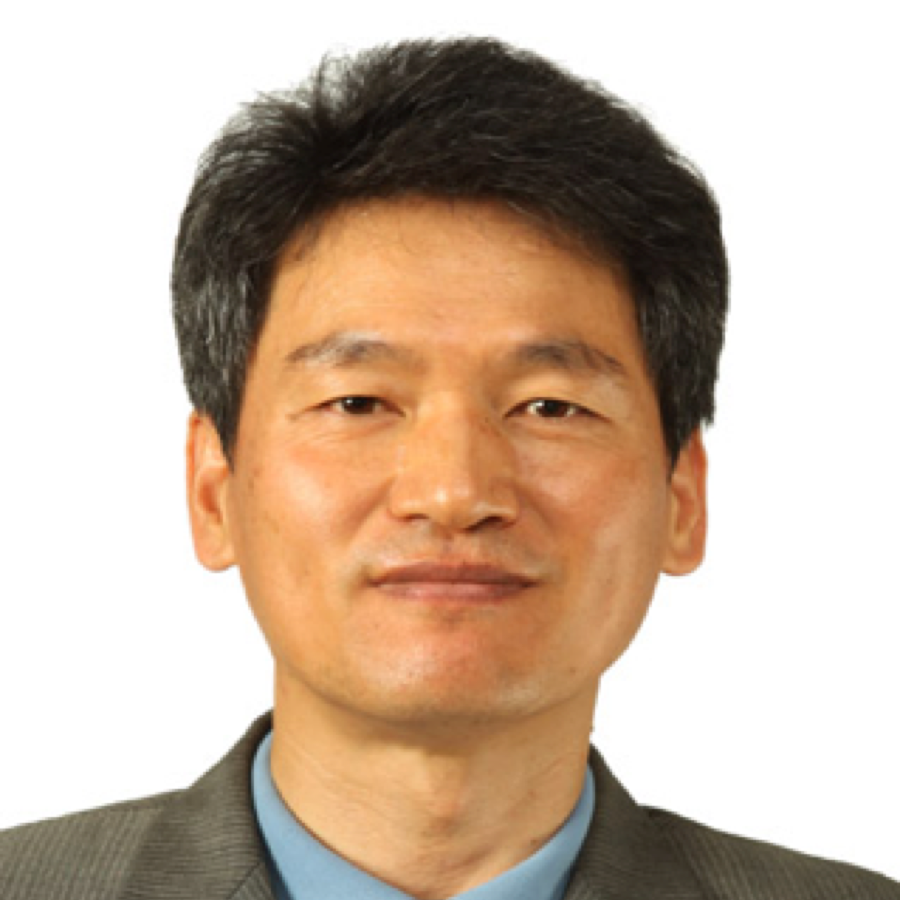
- Ph. D.
- Youn-il Park
- Plant PhotoBiology
- N11-311
- Laboratory of Plant PhotoBiology (N11-312)
- +82-42-821-5493, 7532
- yipark@cnu.ac.kr
Academic Career
- Ph. D., 1993, Seoul National University, Seoul, Korea
Career
- Post-Doc., 1994-1998, CSIRO, Australian National University, and Umea University
- Assistant, Associate and Prof., 1998 - current, Chungnam National Univ.
- Visiting Prof., 2004-2005, Washington State Univ.
Research Interests
Photosynthetic organisms optimize their photosynthetic performance in response to ever-changing light environments by virtue of a range of photosensory and signaling systems. Sensing light cues are mediated by photoreceptors that consist of apoproteins and chromophores including tetrapyrroles, flavins or p-coumaric acid, vitamin B12, and pterins. Among these chromophores, bilin species like biliverdin, phycocyanobilin and phytochromobilin derived from the oxidative degradation of heme are ubiquitous in phytochrome superfamily photoreceptors. Till today, cyanobacterial phytochromes characterized in depth are mostly originated from unicellular freshwater Synechocystis sp. PCC 6803 or nitrogen-fixing multicellular filamentous cyanobacteria Nostoc punctiforme ATCC29133 and Anabaena sp. PCC 7120. However, light sensing and signaling machinery are barely known in mat-forming cyanobacteria from extreme environments such as saline lagoons, thermal springs, or soda lakes. Such habitats featuring high content of carbonates and high levels of pH contain unicellular (Rhabdoderma, Euhalothece, and Synechococcus) and multicellular filamentous (Microcoleus, Phormidium, and Mastigocladus) cyanobacteria. Recently, we sequenced a dozen genomes of extremophilic cyanobacteria including Microcoleus, Rhabdoderma, Euhalothece that was diverged between 0.67 ~ 1.5 BYA and systematic approaches are undertaken to explore biochemical and biological functions of mostly bilin based photoreceptors primarily aiming for our understanding.
Photosynthetic biofuel production is one of the alternative forms of energy supply to fossil fuels since its use is controversially considered as the main reason for high oil prices and global warming. However, natural algal strains should be redesigned to increase their low lipid productivities for the sake of biofuel production. Additionally, cell harvesting and post-harvesting steps should become more cost-effective. Recently, oiling algae concept has been introduced to overcome this limitation. To manipulate carbon partitioning and skip algae harvesting and breakage steps, a spatio-temporal inducible rather than constitutive gene expression system is required. Accordingly, we are working on light-inducible switches, which are potentially useful in genetically manipulating Nannochloropsis sp. for designer oiling algae.
Selected Publication
- Song JY, HS Cho, JS Cho, JS Jeon, JC Lagarias and Y-I Park. 2011. A near ultraviolet cyanobacteriochrome signaling system promotes negative phototaxis in the cyanobacterium Synechocystis sp. PCC 6803. Proc. Natl Acad. Sci. USA. 108(26): 10780-10785
- Cho SM, Jeoung SC, Song JY, Kupriyanova EV, Pronian NA, Lee BW, Jo SW, Park BS, Choi SB, Song JJ and Park Y-I (2015) Genomic survey and biochemical analysis of recombinant candidate cyanobacteriochromes reveals enrichment for near UV/violet sensors in the halotolerant and alkaliphilic cyanobacterium Microcoleus IPPAS B353. J Biol Chem. 290(47): 28502-28501
- Cho SM, Jeoung SC, Song JY, Song JJ and Park Y-I (2017) Hydrophobic residues near the bilin chromophore-binding pocket modulates spectral tuning of insert-Cys subfamily cyanobacteriochromes. Scientific Reports 7:40576
- Jeong S-W, Nam SW, HwanBo K, Jeong WJ, Jeong B, Chang YK, and Park Y-I (2017) Transcriptional regulation of cellulose biosynthesis during the early phase of nitrogen deprivation in Nannochloropsis salina. Scientific Reports 7:5264



